The Project That Fell on Its Face
My team and I completed a year-long project to implement a new technology solution for our customers. It was hundreds, if not thousands, of hours of work.
We were ending a long slog, and finally, we could see the end. Things weren’t perfect, but the cutting edge technology was working the way we thought it should.
But that all changed with one meeting. The project sponsor said,
“I know that is technically what I asked for, but it is not what I want.”
We missed the mark, and it sucked. Blame was tossed around, and it became an ugly political mess. How could we have been so far off?
I’m reading through Beth Comstock’s book, Imagine It Forward, and something that Jack Welch taught her is critical for technologists to understand.
If you don’t know of Jack Welch, he was the celebrity CEO of General Electric in the ’80s and ’90s. During his tenure, GE had one of the biggest business turnarounds in modern American history.
Beth was hired directly by Jack because she was driven, capable, and effective at managing public relations. Here’s how she described her own work ethic:
“Moving fast and being organized were my strong suits…The more there was to do, the more alive I felt. I loved to be productive, efficient, every to-do-list item checked. Urgency was my favorite soundtrack. I loved the energy and the thrill…”
Does this sound familiar to you? When I am in the zone, I love checking items off my to-do list. Especially early in my career, I had a lot of success getting things off my plate as fast and as efficiently as possible. However, I didn’t realize then that my myopic focus on my task list limited my effectiveness.
It’s odd, isn’t it? How can getting more done limit your effectiveness? Let’s go back to the story about Beth at GE:
“…imagine my surprise when, one afternoon, I was talking on the phone to Jack when the line went dead. I called his assistant, Rosanne, to say we had been disconnected.”
She said, “No, you weren’t. Jack hung up on you.”
“WHAT?”
“He says he wants you to know what it’s like to be in a meeting with you,” Rosanne told me. “You’re too abrupt.”
That must have stung. That is quite a dramatic way to teach someone that lesson. I’m not commenting on his tactics- whether that is a healthy way to deal with that or not is debatable- but rather to focus on the drive versus the connection with others.
When she talked with Jack in person, he told her
“Take time to get to know people. Understand where they are coming from, what is important to them. Make sure they are with you.”
As technology experts, we often jump right to the problem or issue and prepare a pragmatic solution right away so we can check it off our lists of things to do. Immediately seeking a solution is a great trait – and it helps us get a lot accomplished in short amounts of time.
But too often, we gloss over the human factors and in our drive to accomplish, we miss important factors that could help us be even more effective. I was guilty of running through all of the technical tasks and driving the project to completion and overlooking how people were going to use the technology and if it would make their lives better or not. We missed the mark because we ignored the human factors.
So take the time to connect with people – especially with your customers – throughout every phase of a project. It will help you prevent situations where you work hard to deliver your customers a solution only to find that that solution is not what they need.
